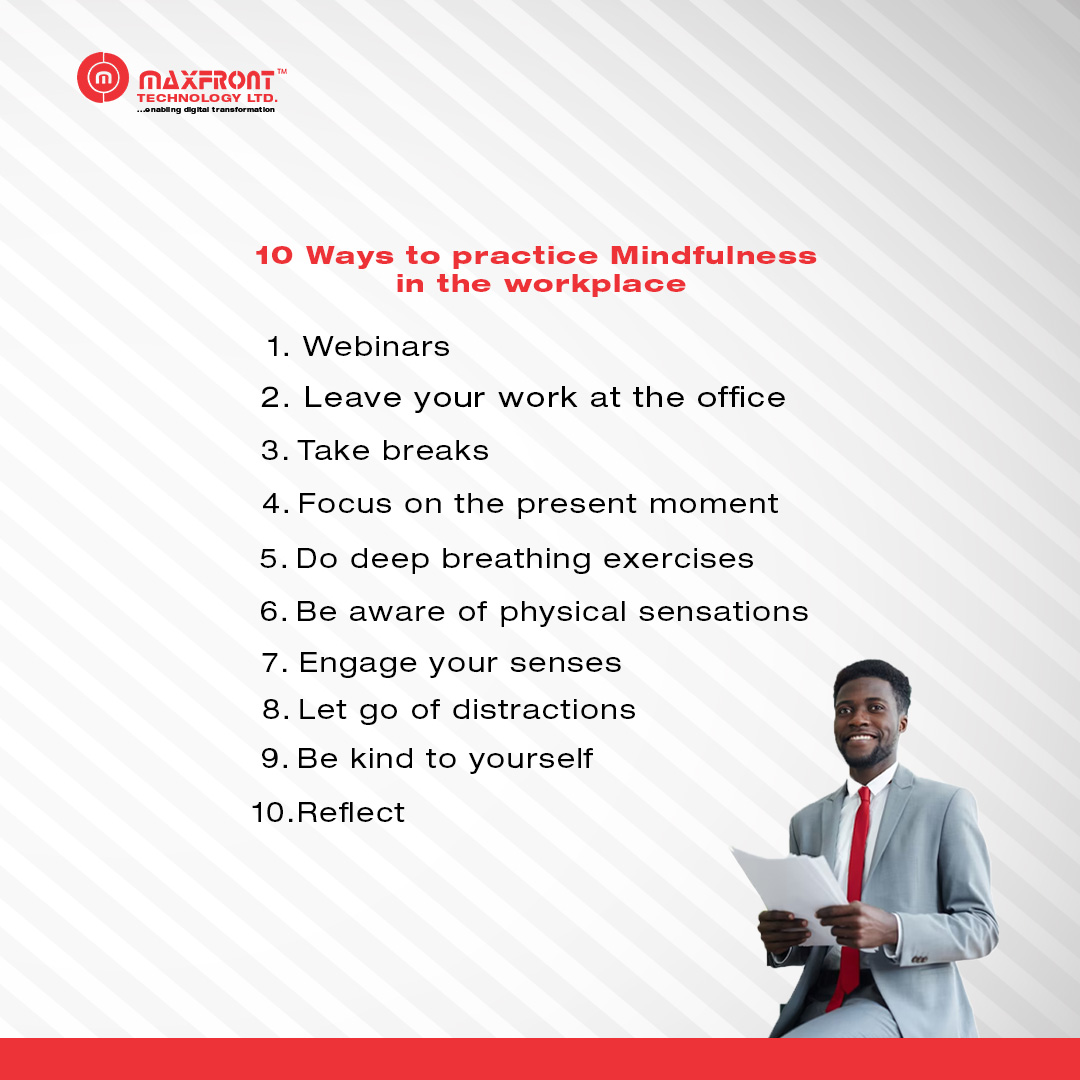Work can be stressful, posing a risk to employees’ mental health. Mental illness is the leading cause of sickness absence, accounting for 70% of the 130 million sick days taken annually. People’s jobs are increasingly demanding, but interventions based on mindfulness meditation can improve well-being and performance. There are efforts to help employees deal with the stresses of work and protect against or ameliorate mental health issues. Studies of mindfulness meditation in work settings have shown several positive outcomes leading to improved job satisfaction, performance, and well-being for employees.
What is Mindfulness?
Mindfulness involves focusing on the present, paying attention to what is happening, and accepting the experience. Mindfulness is moment-to-moment awareness of oneself and the environment without reacting or judging.

Mindfulness promotes self-awareness and emotional intelligence and has physiological benefits such as lower blood pressure, improved memory, and reduced depression.
Mindfulness meditation focuses on training the self-regulation of attention and awareness to increase well-being. Common forms include focused attention and open-monitoring processes. It involves being able to ‘stand back’ and view qualia as phenomena passing through the mind rather than identifying with and attaching to them. Mindfulness is essential for managing negative emotions and managing stress and anxiety.
Impact of Mindfulness and Well-being on Employee Productivity
Companies are becoming more conscious of the value of employee well-being and should practice Mindfulness to ensure their workforce is happy, healthy and able to cope with everyday challenges. Mindfulness therapy can improve employee well-being and business performance; it positively impacts well-being, relationships, and creativity. Mindfulness has both physiological and workplace benefits.
- Employee well-being
Organizations are investing in employee well-being due to increased awareness of the costs of absenteeism, presenteeism, turnover, and lack of productivity.
Mindfulness training can help employees respond to challenging situations effectively and positively affect burnout, well-being, and stress.
- Healthy working relationships
Mindfulness can improve relationships and increase job satisfaction and commitment, reducing turnover and attracting new talent. Healthy working relationships lead to more productive teams, altruistic behaviour, and increased productivity. Leaders must develop the capacity to acknowledge their thoughts and environment to respond effectively during change or stress. Increased Mindfulness reduces stress, improves work-life balance, increases performance, and increases engagement.
3. Promotes Resilience
Mindfulness promotes resilience, allowing people to approach people and situations positively and assess situations objectively.
4. Boost Creativity
Creativity is essential for innovation and problem-solving, and Mindfulness can help with creativity by providing increased focus, more significant idea generation, and improved receptiveness to new ideas.
- Teamwork and better leadership
Mindful leadership increases self-awareness and compassion, inspiring confidence and setting the tone for the company. Conscious leadership focuses on motivation, creativity, clarity and compassion, increasing self-awareness and understanding.
- Increased Productivity
Leading by example and sharing experiences to implement Mindfulness in the workplace can increase rational thinking and reduce sunk-cost bias, leading to a more streamlined, productive business.
10 Ways to Practice Mindfulness in the Workplace

Practising Mindfulness in the workplace can improve focus, reduce stress, and increase overall well-being. Some ways to incorporate Mindfulness at work include:
- Webinars: Webinars offer flexibility and cost-effectiveness, similar to facilitator-led programs. These programs are scalable across several locations and could also give employees a feeling of better confidentiality.
2. Leave your work at the office: Turn off work notifications and be present at home to enjoy a break and start the next day.
- Take breaks: Throughout the day, pause to step away from work and focus on your breathing and sensations.
4. Focus on the present moment: Pay attention to your actions and avoid multitasking.
5. Do deep breathing exercises: Take a few deep breaths during the day to calm your mind and relieve stress.
6. Be aware of physical sensations: Notice how your body feels and focus on phenomena such as the sensation of your clothes against your skin or the feeling of your feet on the ground.
- Engage your senses: Take time to appreciate the sights, sounds, smells, and tastes around you.
8. Let go of distractions: Acknowledge and let go of distractions, and return your focus to the present moment.
9. Be kind to yourself: Practice self-compassion and treat yourself with kindness and understanding.
10. Reflect: At the end of the day, reflect on your thoughts and experiences, and encourage gratitude by taking note of things you are thankful for at work.
Practising Mindfulness and well-being can positively impact workplace productivity by reducing stress, increasing focus, improving communication, and enhancing overall employee satisfaction. Mindfulness can help individuals better manage their emotions and react to challenging situations with a clearer and calmer mind, reducing stress and burnout. Improved focus and decision-making abilities lead to more effective and efficient work. Improved communication and relationships with coworkers can also lead to more collaboration and a more positive work environment. Employees can feel more fulfilled and motivated by prioritizing mental health and well-being, leading to increased productivity.